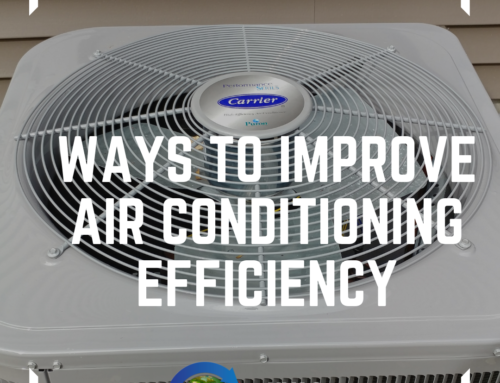The Best Time to Fix HVAC Problems is NOW
If your home has exhibited problems this summer, they will not disappear by themselves. More than likely, you will experience problems in the long winter months and most certainly, you will see the problems return next summer. Now is the time to correct them. During milder weather, it can be difficult to diagnose some comfort problems. During the start of the next heating or cooling season every heating and air conditioning company is scrambling to meet emergency demand.
Inadequate Airflow
When an air conditioning company examines comfort problems, the first thing checked is the air flow. Often, a room is uncomfortable due to a simple lack of conditioned air.
The amount of air required in a room is dependent upon a number of factors, such as the ceiling height, insulation, amount of windows, exposure to the sun, occupant preferences, and so on. Contractors measure the air entering the room through a supply air register or diffuser by using a balancing hood, velometer, hot wire anemometer, or by taking static pressure readings. They measure the velocity of air and the area of the supply air outlet to determine the cubic feet of air entering the room each minute (CFM). As a rule of thumb, contractors look for 0.75 to 1.0 CFM for each square foot of living space.
When inadequate air flow is identified, it is important to track down the reason. The duct system in your home is a system. It must be balanced, taking all other outlets and rooms into consideration. Increasing the airflow into one room, reduces it in others. Care must be taken to ensure the duct system is properly balanced so fixing one comfort problem does not create a rash of other problems.
Unless they are already present, balancing a duct system may require the installation of low cost balancing dampers in the duct system. Balancing dampers partially close off a duct run with excess air, diverting it to other duct runs that are short of air.
Unless they are already present, balancing a duct system may require the installation of low cost balancing dampers in the duct system. Balancing dampers partially close off a duct run with excess air, diverting it to other duct runs that are short of air.
Improperly Sized Ducts
There are several reasons a room might lack the proper amount of airflow. The duct supplying the room might be too small. A few simple calculations will quickly reveal this if it is a problem.
If so, it can be easily corrected. Of course, changing one part of the duct system will require rebalancing the system.
Duct Leakage
Often, ducts are leaking, particularly at transition points. Visible inspections can identify this some of the time. In other cases, leaks are not obvious. The technician can identify the exact amount of leakage by measuring the air entering the duct and comparing it with the air delivered through the outlet, though if one duct is leaking others are likely to be leaking as well. For this reason, it’s common to measure the total supply air leaving the fan and compare it against the air flow from all of the outlets.
The technician can then use a puffer or a type of incense stick to track down the exact points where air is leaking and make repairs. Designed specifically for the purpose of making air visible, these tools do not leave an odor in the home.
Of all duct leakage, none is worse than return air leakage when the returns are exposed to the outside. This creates special problems in summer months because hot, humid air is entering the comfort system. In addition to bringing the air temperature down, the air conditioner must also wring moisture from the air. As air temperature is reduced, it’s ability to hold water vapor is also reduced. The process of converting water vapor to liquid condensate is energy intensive. Much of the air conditioner’s capacity can be lost by the need to dehumidify the air before cooling it further.
Pressure Problems
Rooms can become too pressurized, reducing the amount of air that can enter the room. Usually this occurs when a door is closed, the room does not have a return air outlet, and space under the door is inadequate to allow the air entering the room to escape.
The pressurization of a home is critically important. If areas of the house show negative pressure, backdrafting of chimneys and gas appliances can occur. Backdrafting of combustion appliances is a serious hazard, allowing deadly carbon monoxide to enter your home. Carbon monoxide poisoning can be fatal!
Heat Gain or Loss
Not all comfort problems are related to the air conditioning system. Insulation in the ceiling or an exterior wall may be inadequate, for example. Sometimes this is the result of an oversight during construction. Other times it may result from moisture damage to the insulation or from certain types of insulation settling over time. Provided it is a hot or cold day, it is relatively simple to check the insulation using infrared thermometers. No one needs to cut into your walls. Of course, if the temperature readings suggest that a problem is present, it will become necessary to investigate further. Fortunately, drywall can be easily repaired.
Heat gain or loss can also come from windows. Sometimes comfort problems can be addressed with a simple window glazing or replacement.
Air infiltration is another source of heat gain or loss. Air can leak around poorly sealed doors and windows or through outlets and switches on external walls. Weatherstripping and sealing doors and windows can reduce infiltration, as can adding gaskets to wall outlets.
Many homeowners suffer needlessly in their own homes during extreme weather. It’s a shame because comfort problems can be corrected. Often, when a comfort problem is present, energy is being wasted. Correcting the comfort problems may also reduce utility costs. Before a treatment can be applied, the root problem(s) must be diagnosed. The first step to making a home comfortable is a thorough diagnostic procedure by a trained professional.
Comfort problems can be fixed! Reach out to us now and let’s make your home or office a better place to be.
Source: www.serviceroundtable.com






